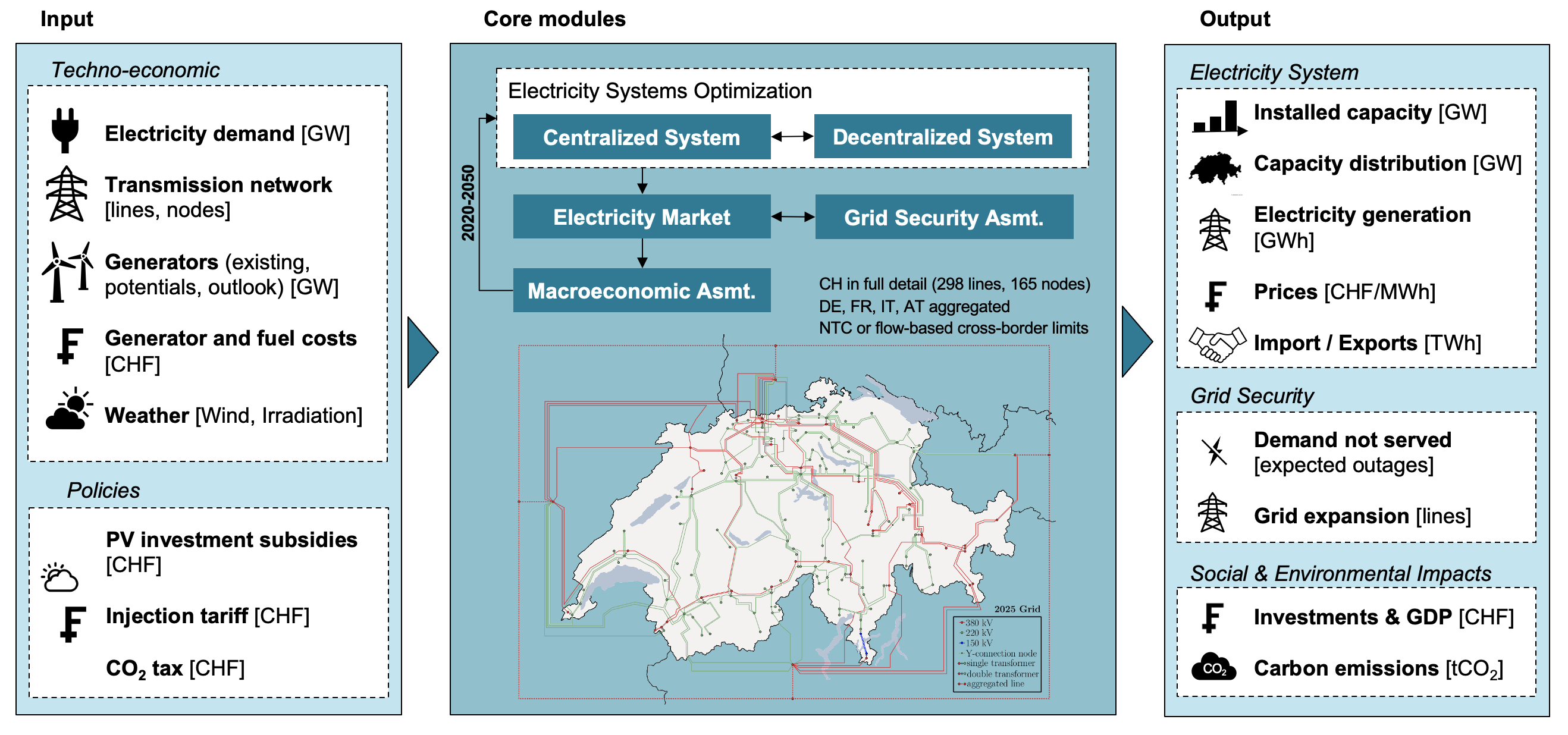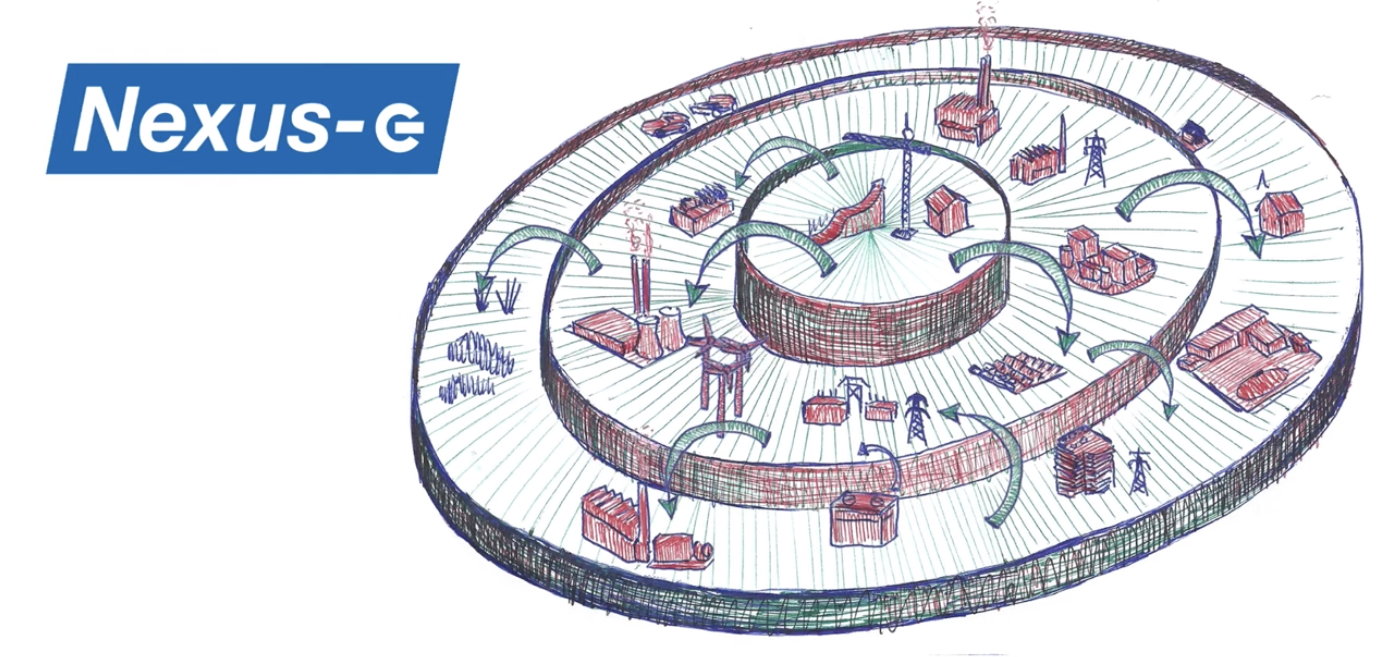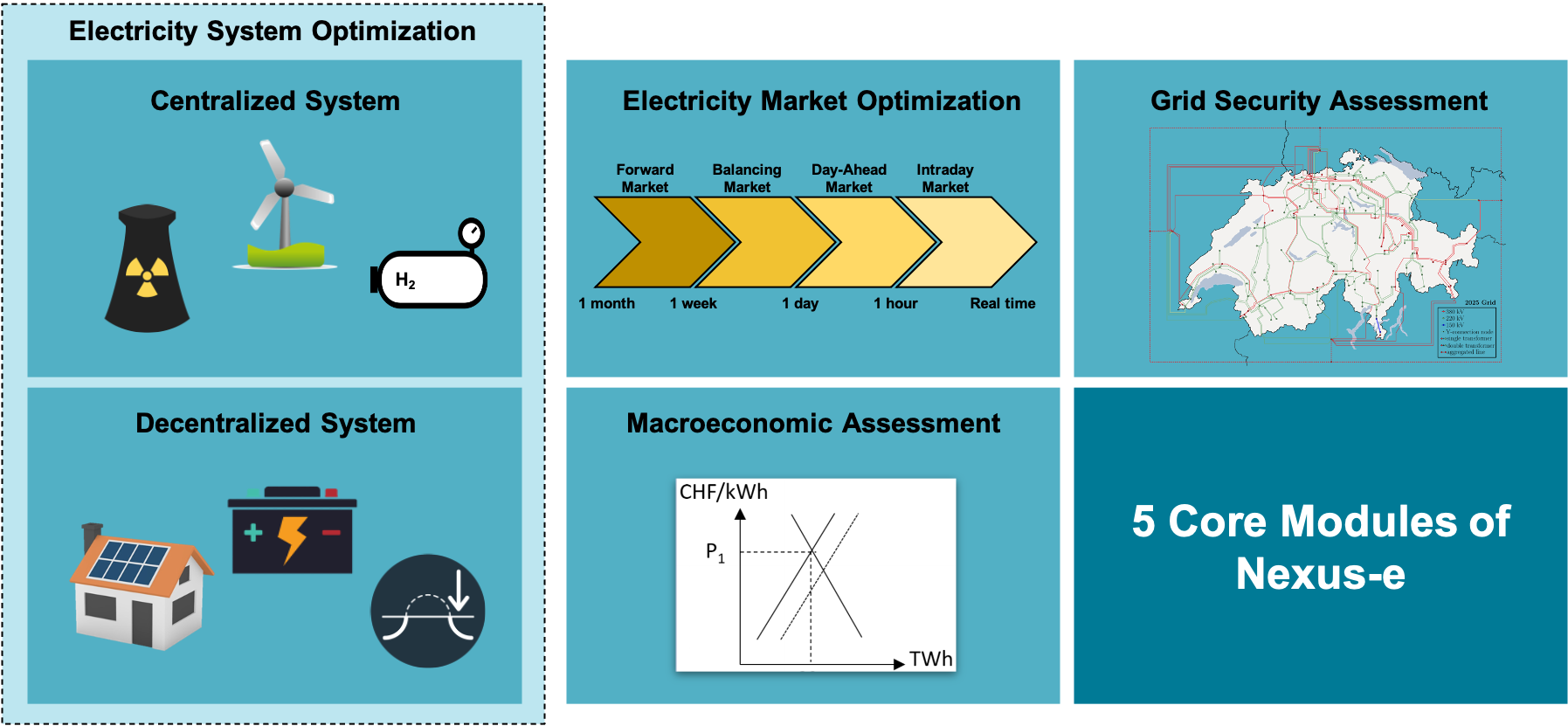Nexus-e
An interconnected energy systems modeling platform
MOTIVATION
Policy changes in the energy sector result in wide-ranging implications throughout the entire energy system and influence all sectors of the economy. Due partly to the high complexity of combining separate models, few attempts have been undertaken to model the interactions between the components of the energy-economic system.
The Nexus-e Interconnected Energy Systems Modeling Platform aims to fill this gap by providing an interdisciplinary framework of modules that are linked through well-defined interfaces to holistically analyze and understand the impacts of future developments in the energy system. This platform combines bottom-up and top-down energy modeling approaches to represent a much broader scope of the energy-economic system than traditional stand-alone modeling approaches. The Nexus-e platform is featured with its modularity, defined interfaces, and transparency.

This may include analytics, personalization, and ads.
Learn more
OK
Modularity
- Integrate cross-disciplinary models through a flexible and modular structure
- Interact with existing projects to capture/keep know-how
Defined interfaces
- Identify, define and implement interfaces to capture model interdependencies
- Interconnect layers and sectors of the energy system
Transparency
- Be a transparent and well-trusted platform that is openly available
- Provide reproducible results and analyses: not a ‘black box’
- Harmonize research viewpoints, data and assumptions
CORE MODULES
Today, the five core modules of Nexus-e focus on the Swiss Electricity System. The core modules include four bottom-up high-resolution electricity system modules and one top-down economic module. By interconnecting the modules, the Nexus-e platform accounts for energy demand and supply, macro energy-economic factors, and energy policy drivers across multiple time-scales and levels of aggregation.
More details about how the modules work together through interfaces and loops can be found here.
Model framework
In the pilot project “The role of flexibility providers in shaping the future energy system” Nexus-e is applied to investigate the challenges and impacts of the transition of the Central European electricity system, with a focus on the investment decisions and flexibility needs of Switzerland.
The scenarios investigated in the pilot project include the phase-out of nuclear power and the resulting massive integration of renewables. Techno-economic parameters (including the development of the generation mix in Switzerland’s neighbouring countries) and policy developments are taken as exogenous inputs. Through optimization with the 5 interconnected core modules, Nexus-e provides the potential pathways of the future Swiss electricity system (including generation expansion, electricity prices, cross-border exchanges, grid security, etc.) and its social & environmental impacts from 2020 to 2050 in steps of 10 years as outputs.
Detailed documentation about the system setup and input data can be found here.
To reference the Nexus-e modeling platform, please use the following citation: Gjorgiev, B., Garrison, J.B., Han, X., Landis, F., van Nieuwkoop, R., Raycheva, E., Schwarz, M., Yan, X., Demiray, T., Hug, G., Sansavini, G., Schaffner, C. (2021). Nexus-e: A platform of interfaced high-resolution models for energy-economic assessments of future electricity systems. Applied Energy, 177, 118193. DOI: 10.1016/j.apenergy.2021.118193



